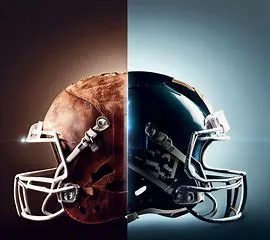NCAA Finances Unveiled: Revenue and Expenses by School—The Numbers Game You Didn't Know About
Alright, sports fans, let's talk money—specifically, the kind of money that fuels the college sports machine. You might think it's all about ticket sales and merchandise, but oh boy, are you in for a surprise. Let's pull back the curtain on NCAA finances and see where the cash really flows.
NCAA Revenue and Expense Report: The Holy Grail
When it comes to understanding the financial landscape of college sports, the NCAA Revenue and Expense Report is your go-to source. Think of it as the Rosetta Stone for deciphering the complex language of college sports economics. Published annually, this report provides a detailed breakdown of where the money comes from and where it goes.
So, what types of revenue are we talking about? Well, there's ticket sales, of course, but that's just the tip of the iceberg. Television contracts, licensing deals, and even donations contribute to the pot. And let's not forget the lucrative bowl games and tournaments that can bring in millions.
On the flip side, expenses are another beast altogether. Scholarships, coaching salaries, facility maintenance, and travel costs are just a few line items you'll find. And you'd be surprised how quickly these numbers add up. For instance, did you know that some head coaches in top-tier football programs earn salaries that rival those of NFL coaches?
Why is this report so important? Because it sheds light on the financial priorities of college sports programs. Are schools investing more in athletics than academics? Are student-athletes getting a fair share? These are the kinds of questions that the report can help answer, making it a must-read for anyone serious about understanding the economics of college sports.
College Athletics Revenues and Expenses: The 2022 Edition
The year 2022 was a rollercoaster for college sports, both on and off the field. With the lingering effects of the pandemic, schools had to get creative to keep the money flowing. Some turned to virtual fan engagement, while others struck new licensing deals to make up for lost ticket sales.
On the revenue side, streaming rights have become a hot commodity. With more people watching sports from the comfort of their homes, schools have been quick to jump on the streaming bandwagon. And let's not forget the rise of Name, Image, and Likeness (NIL) deals, which have opened up a whole new revenue stream for both schools and athletes.
But what about expenses? The pandemic forced many schools to make tough decisions, like cutting non-revenue sports or furloughing staff. However, as the world returns to some semblance of normalcy, spending is ramping up again. Facility upgrades, recruitment, and even athlete stipends are back on the table.
What makes the 2022 edition of revenues and expenses so fascinating is the adaptability and resilience shown by schools and athletic programs. It's a testament to the ever-changing landscape of college sports and a preview of what's to come. So, if you're keen on understanding the current state of college sports finances, 2022 is a year you can't afford to ignore.
NCAA Licensing Revenue: The Merchandise Money Train
When you buy that snazzy jersey or foam finger from your college bookstore, you're not just showing school spirit; you're hopping aboard the merchandise money train. Licensing revenue is a significant chunk of the NCAA's income, and it's a lot more complicated than you might think.
First off, let's talk about how these deals work. Schools often partner with apparel companies like Nike, Adidas, or Under Armour to produce officially licensed merchandise. These companies pay the schools for the rights to use their logos, mascots, and other branding elements. It's a win-win: the schools get money, and the companies get to sell products that fans will pay top dollar for.
But here's where it gets interesting. With the recent changes in NIL rules, athletes can now also cash in on licensing deals. Imagine a star quarterback getting a cut every time his jersey is sold—that's now a reality. This shift has the potential to revolutionize the economics of college sports, making athletes more like partners than mere participants.
So, the next time you buy some college sports swag, remember: you're not just supporting your team; you're also contributing to a multi-million dollar industry that's evolving right before our eyes. And with athletes now getting a piece of the pie, the merchandise money train is picking up speed like never before.
Big Ten Athletic Revenue: The Heavy Hitters
When it comes to financial clout in college sports, the Big Ten conference is in a league of its own. Schools like Ohio State, Michigan, and Penn State are not just athletic powerhouses; they're also revenue-generating machines. But what makes the Big Ten such a heavy hitter in the financial arena?
Firstly, let's talk TV deals. The Big Ten has some of the most lucrative television contracts in all of college sports. Networks are willing to pay big bucks for the rights to broadcast Big Ten games, and that money trickles down to the schools, fueling everything from athletic scholarships to state-of-the-art facilities.
Speaking of facilities, Big Ten schools are known for having some of the best in the country. We're talking stadiums that rival professional venues, cutting-edge training centers, and even dedicated academic support for athletes. These investments not only attract top talent but also generate additional revenue through ticket sales, events, and more.
But it's not all about the money. Big Ten schools also invest heavily in their athletic programs, offering a wide range of sports and opportunities for student-athletes. This holistic approach not only enhances the college experience but also contributes to the conference's overall prestige and drawing power.
So, the next time you marvel at a Big Ten school's athletic prowess, remember that behind the scenes, there's a well-oiled financial machine making it all possible. It's this combination of revenue generation and smart investment that sets the Big Ten apart as the heavy hitters of college sports.
NCAA Revenue by Sport: Not All Games Are Created Equal
Football may be the king of college sports when it comes to revenue, but what about the other players in the game? Basketball, baseball, soccer, and even lesser-known sports like lacrosse and rowing all contribute to the NCAA's coffers, albeit in varying degrees.
Let's start with basketball. March Madness alone brings in a staggering amount of money through ticket sales, sponsorships, and broadcasting rights. It's a cash cow, but it's still second fiddle to football in terms of overall revenue. And then there's baseball, which has a dedicated following but doesn't quite hit the financial home runs that football and basketball do.
But what about the so-called "non-revenue" sports like swimming, track and field, or gymnastics? These sports often operate on shoestring budgets and rely heavily on fundraising and donations. The athletes in these programs may be just as dedicated and talented, but the financial rewards are often minimal, if not non-existent.
This disparity in revenue generation raises some important questions. Should more be done to support non-revenue sports? Is it fair for football and basketball to hog the limelight (and the money)? And what does this mean for the future of college athletics?
Understanding the revenue landscape across different sports is crucial for anyone interested in the economics of college athletics. It's a complex ecosystem where not all games are created equal, and the financial stakes can vary dramatically from one sport to the next.
Time for Transparency: NCAA Financial Reports Database
In an era where information is power, transparency in financial reporting is more critical than ever. And when it comes to college sports, the NCAA Financial Reports Database is a treasure trove of data that can shed light on the inner workings of athletic programs across the country.
So, what can you find in this database? Everything from detailed revenue and expense reports to breakdowns of athletic scholarships. It's a goldmine for researchers, journalists, and even curious fans who want to know how their favorite schools are managing their athletic budgets.
But why is this transparency so important? For starters, it holds schools accountable for how they allocate funds. Are they prioritizing athletics over academics? Are student-athletes getting their fair share? These are questions that can be answered through careful analysis of the data.
Moreover, transparency fosters informed decision-making. Whether you're a prospective student-athlete choosing a school or an alumnus considering a donation, having access to financial data can guide your choices. It's all about making sure that the money is being spent wisely and in a way that benefits the entire college community.
In conclusion, the NCAA Financial Reports Database is an invaluable resource for anyone interested in the economics of college sports. It's time for more transparency, and this database is a step in the right direction.
If you're intrigued by the financial intricacies of college sports, you'll definitely want to read our previous article on The Real Cost of College Sports.


